Today’s lighting systems are smart and controllable. Lighting control devices manage and automate lighting as per the user’s needs. Increasing demands for energy savings and versatility to support visual needs have given lighting control greater importance. The lighting control system utilizes distinct control strategies to satisfy the energy codes and standards, which provides the minimum acceptable energy usage for the buildings. Getting control over the fixtures in a facility using sensors, schedules, and dimmers dramatically save on maintenance costs and energy consumption.
How does a lighting control system work?
The lighting control system operates on an input/output basis. Upon receiving data from an input device, the controller decides what to do with it, and then adjusts the lighting behavior accordingly. Inputs are either user-controlled, such as a button press, or automated, while the outputs are RGB, CCT, Intensity, and ON/OFF controls. Lighting control can be integrated with a single luminaire or a group of luminaries to create a more efficient workspace.
Types of Strategies
Lighting control strategies, such as task tuning, daylight harvesting, occupancy sensing, scheduling, and dimming, can be combined to save energy in specific areas of a building. These methods, in addition to energy conservation, greatly enhance the ambiance of a space. By employing these strategies together, it’s typical for residential, commercial, and industrial buildings to reduce energy usage.
Task Tuning
A great way to save energy is to set up a task tuning for the luminaries.
Task Tuning can also be called “Institutional Tuning” and “High-end Trim.” It involves adjusting light intensity levels based on the requirements of the space. Setting the maximum light allowance, or high-end trim, saves energy, as not every space requires 100 percent light intensity. The intensity level in an area can be trimmed or tuned to less than 100% as per the user’s choice.
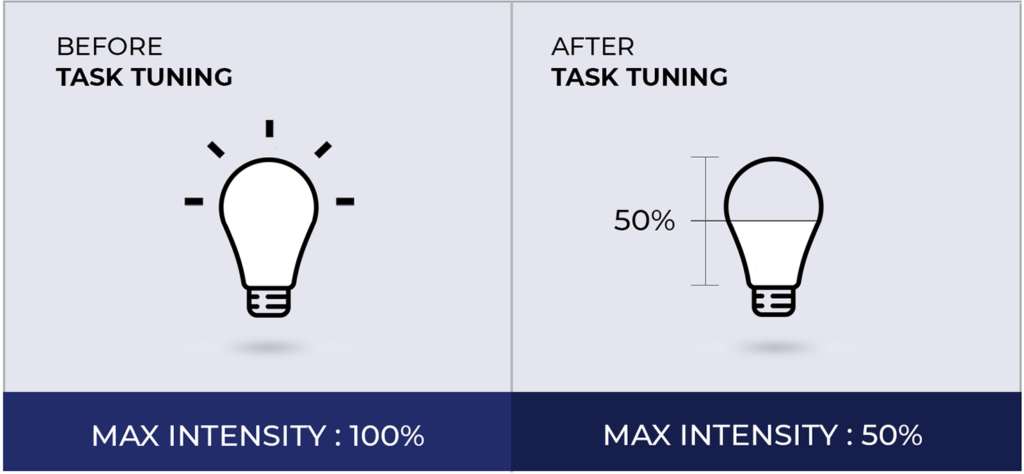
Daylight Harvesting
Daylight harvesting remains a feasible lighting control strategy and a mandatory requirement in the current commercial building’s energy codes. Daylight harvesting is a system that automatically dims or adjusts the brightness of light in response to the amount of natural light available in a space. Savings increase by optimizing daylight utilization in buildings with more windows and skylights. Check out our latest block post about daylight harvesting to know more.
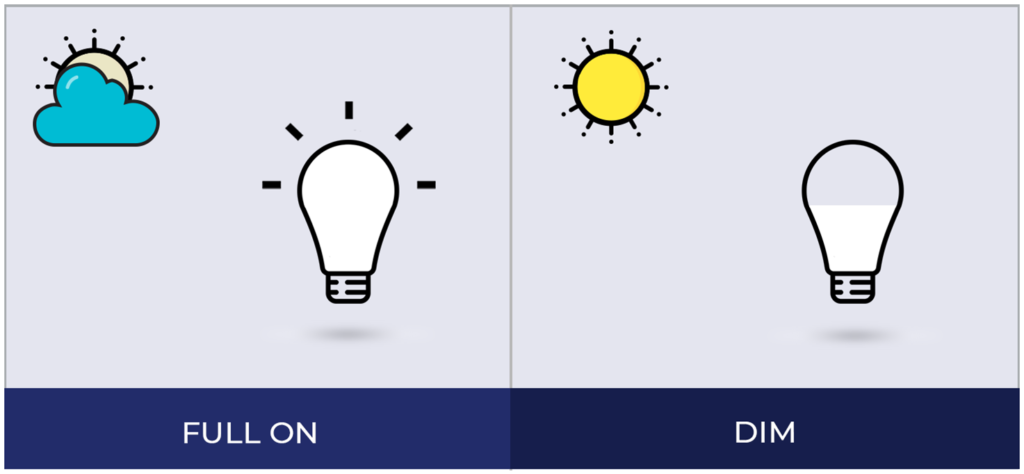
Occupancy Sensing
Occupancy sensing is the most common control method employed today for energy savings. Occupancy sensors automatically turn ON lights when people enter a space and turn them OFF (or Dim) shortly after people leave. They enable automated lighting control in enclosed offices, open workspaces, and shared amenity spaces.
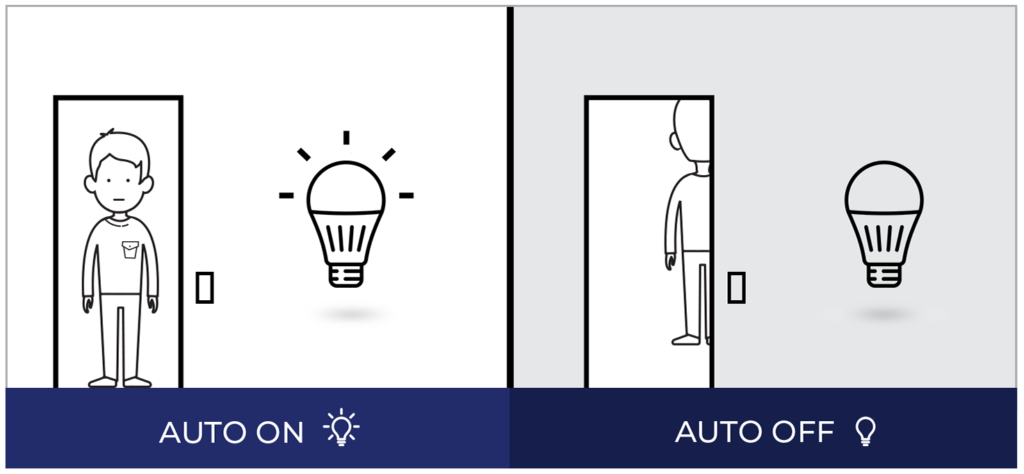
Vacancy Sensing
Vacancy sensors save more energy than occupancy sensors by eliminating the false triggering of the sensors. It requires the occupants to turn on the lights manually based on their needs. The sensor will automatically turn the lights off, provided, the space is detected to be vacant, or no motion is detected. This strategy is proven with enhanced energy savings as occupants are less likely to turn the lights on when entering a space having enough natural light.
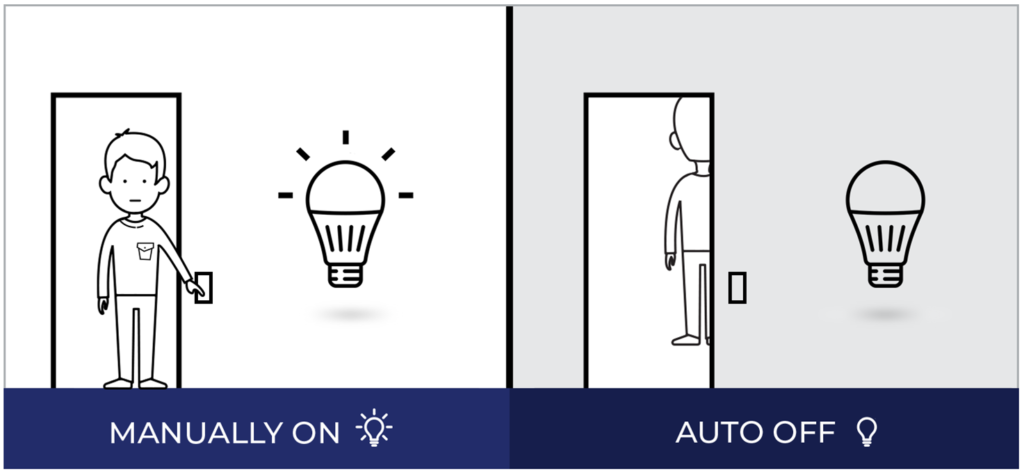
Scheduling
Few buildings work with 24-hour schedules, and many of them remain empty during overnight and weekend hours. A lighting schedule system automates luminaire functions at pre-set time-slots of the day, week, or month to automatically dim or turn ON/OFF lights. Automating light functions saves a considerable amount of energy.
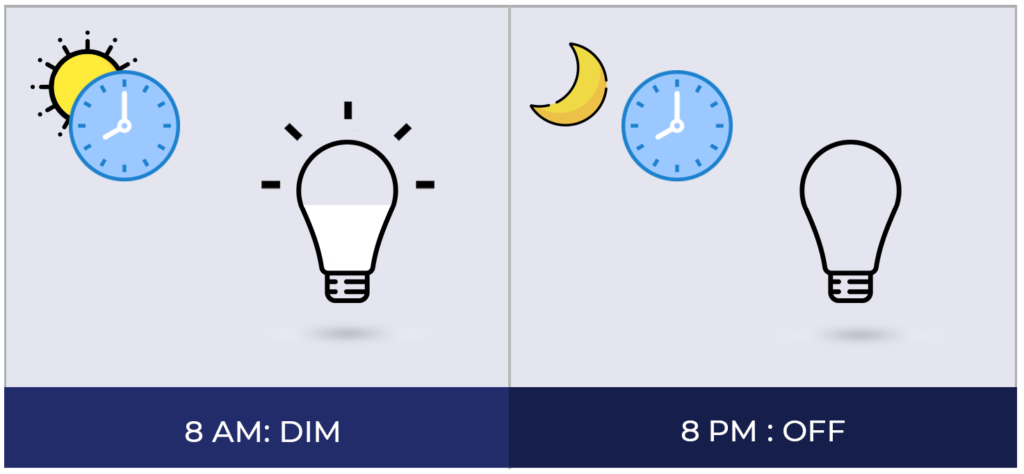
Dimming Control
The majority of enterprises prefer dimmable drivers as a standard option for smart and energy-efficient lighting. Dimmers maximize energy savings by varying the brightness of light as per the user’s choice. The most common dimming technology employed is the 0-10v analog and DALI dimming system.
Investing in a smart control lighting system is a great way to save energy. WiSilica carries many products that help to control your lighting more effectively than ever before.
We provide wireless 0-10V analog and DALI dimming systems to put them to best use for enterprises across industries.
LUMOS-Intelligent wireless control solution from WiSilica utilizes energy-saving strategies such as schedules, occupancy sensing, daylight harvesting, and high-end trim to deliver innovative and energy-efficient lighting for indoor, commercial, architectural, and entertainment applications.
By hitting the submit button you authorize WiSilica to store and process your data in accordance with principles laid out in our privacy policy.






